 Remember!! Comment at the end (below the blog box where it says in little blue letters, “comments” click on that and it takes you to comments and a comment box) in order to enter our giveaway. Drawing is Feb 13th. This time TWO people win one of the two identical packages – Pie tin set and First Out Pie Spatula. So comment early and comment often because every single time you comment, your name goes into the pot!! 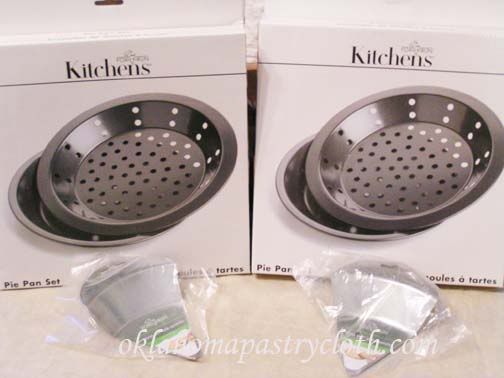 Have you ever had one of those days where washing the dishes is such a chore you just want to walk away and pretend they don’t exist?! Today started out as one of those days for me. I was tired when I got up today. Have no clue why – just tired. However, this morning, as I walked into the bedroom and contemplated the as yet unmade bed, a thought swept over me and I had to smile. “Consider it pure joy, whenever you face trials of many kinds, because you know that the testing of your faith develops perseverance. Perseverance must finish its work so that you may be mature and complete, not lacking anything.” James 1:2-4 4 boneless pork chops or 1 lb boneless pork roast sliced to 1/2″ slices or pork cutlets that have been tenderized at the store 1/4 cup flour 1/2 tsp garlic powder 1/8 tsp thyme 1/4 tsp freshly ground black pepper 1 egg, beaten 2 Tbsp milk 3/4 cup fine dry bread crumbs – make your own with a couple of slices of bread toasted and ground in the blender 1 teaspoon ground paprika 2 Tbsp canola oil or olive oil + 1 Tbsp butter 3/4 cup chicken stock 1/2 teaspoon dried dill or 1 Tbsp fresh chopped dill 1/2 tsp salt 2 tsp corn starch 1/2 cup sour cream or 1/4 cup sour cream + 1/4 cup yogurt 1/4 tsp onion powder 1/2 cup sliced mushrooms (optional) 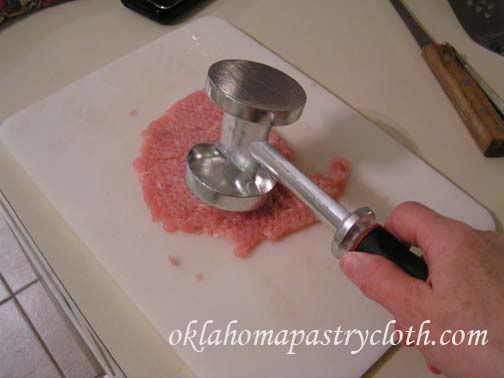 Trim fat from chops. Using a meat hammer, pound the pork chops to about 1/4″ thickness. Make sure edges are hammered nice and flat. 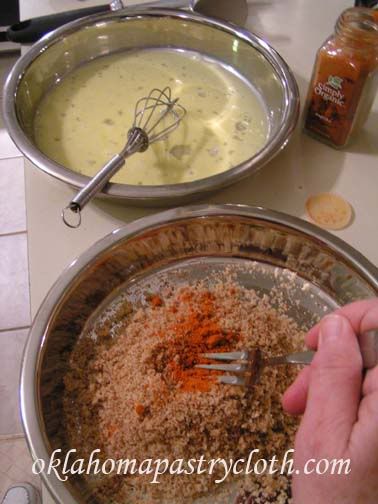 Mix egg and milk in a shallow dish and beat. In a separate shallow dish, mix bread crumbs and paprika and stir to blend. 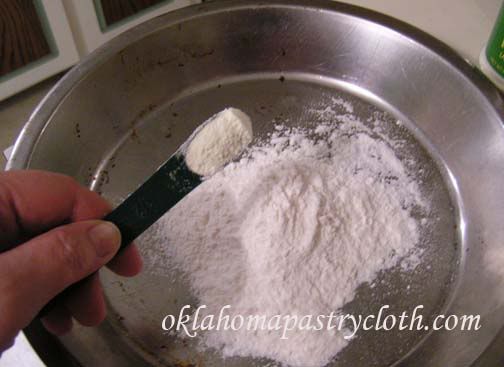 In a third shallow dish (I use pie and cake pans), add garlic to flour 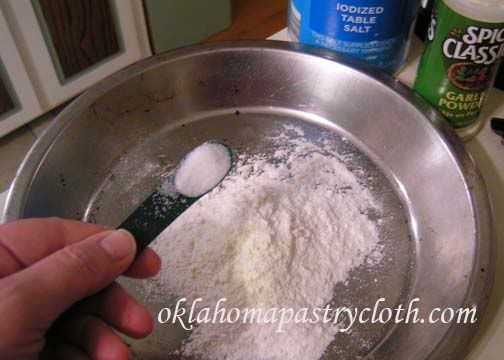 Add salt 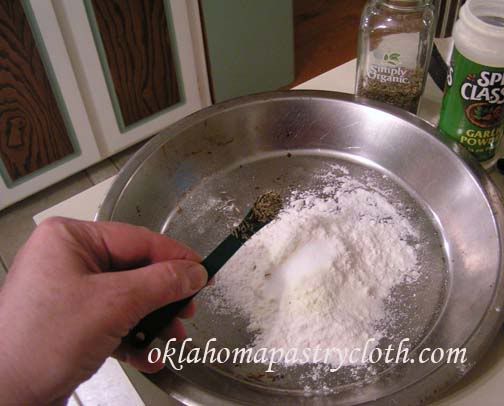 And thyme..mix to blend 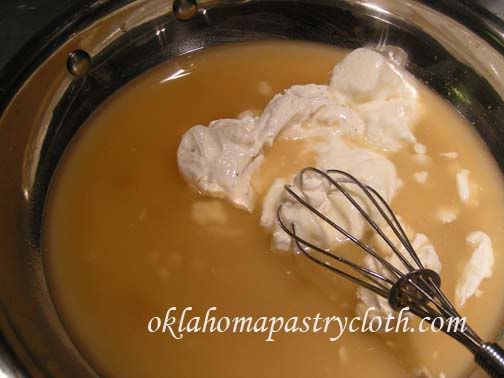 Meanwhile, in a sauce pan or skillet, mix chicken stock and cornstarch and bring to a slow simmer. Add sour cream and onion powder and whisk until creamy. Add mushrooms and stir (if using) Continue simmering. 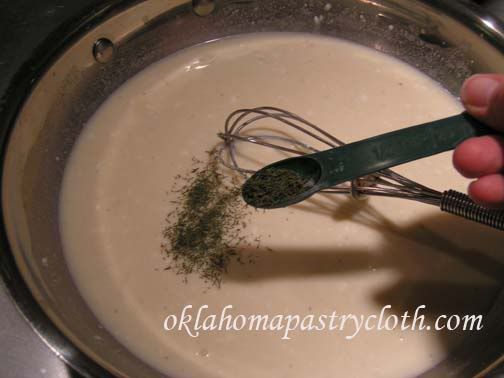 Add dill 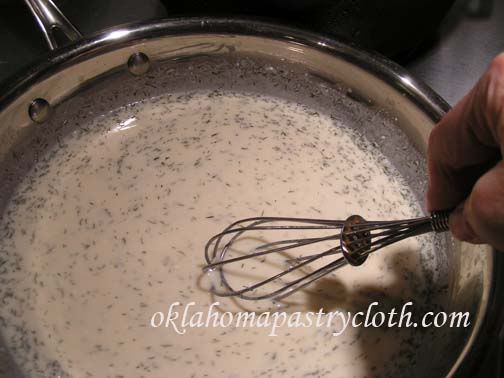 Stir until mixture is thickened to a gravy. Cover and leave on warm 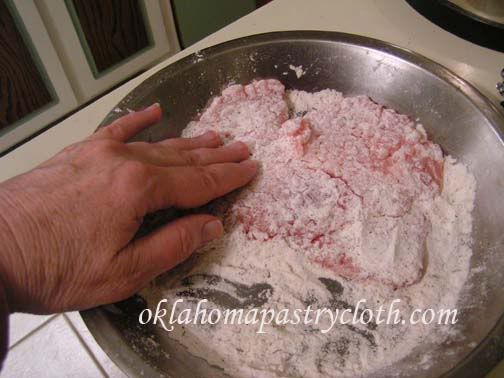 Working with one piece of meat at a time, dredge cutlets in the flour mixture to coat both sides.  Dip into the egg mixture on both sides  And coat with the bread crumbs to cover  In a skillet, melt the butter with the olive oil or canola oil and heat on medium high heat. When oil is nice and hot, add cutlets. Brown and allow to cook about 3-4 minutes. 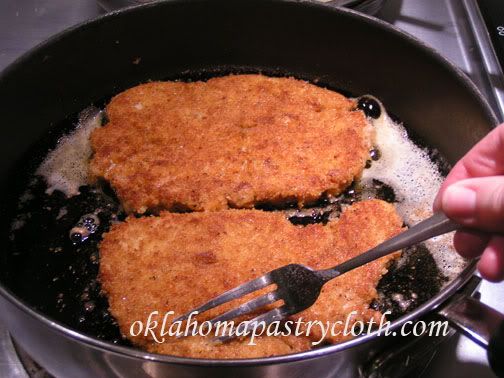 Turn cutlets and brown on the other side and cook for another 3 to 4 minutes. 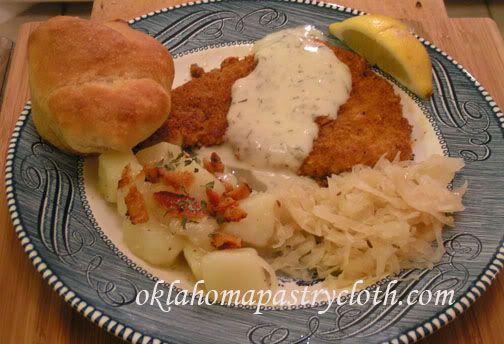 Place Schnitzel onto plates and drizzle gravy down the center. Add a lemon wedge for squeezing juice over the schnitzel. Serve with German potato salad and warm kraut. Of course, a homemade roll on the side isn’t anything to sneeze at!!  |
|
|
Oklahoma Pastry Cloth™ Company on Facebook
|
|
 |
|
|
Posts Tagged ‘Sauerkraut’
German Cooking
Monday, February 6th, 2012
Making Sauerkraut
Sunday, November 14th, 2010
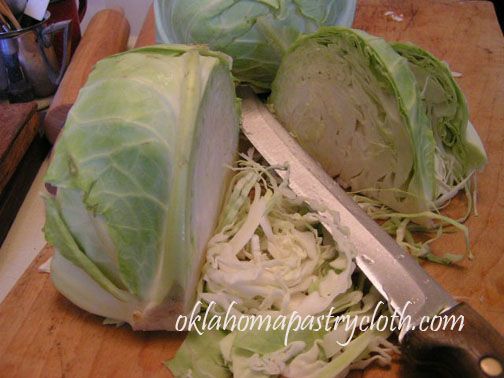 Well, I think that I will venture into the world of German Cuisine and explain the exciting experiment that was performed in the Oklahoma Pastry Cloth™ laboratory. We made Sauerkraut!! That may not sound exciting to most people, but to me it was a journey into my ancestral past. My grandmother made Sauerkraut in crocks and I have two of those crocks. I’ve been told that they had the additional use of being her knife sharpener. She would turn the crocks over and sharpen her knives on the bottom like on a stone, but I digress. I never got to watch my grandmother make her Sauerkraut, but I have heard the stories and so, as much as I love the stuff, I decided to see if maybe making it is in my genes! This experiment was prompted by a sale on cabbage at the Firelake Grocery owned by the Absentee Shawnee tribe nearby. 10 lbs for $1! Now THAT’S a sale. I knew that I had to have that cabbage. So what if I had no idea what to do with it? I had to buy it because it is such a steal and it’s wrong to pass up a steal. As I loaded my buggy, I remembered my grandmother’s crocks and my adventure was set. |
|
According to Wikipedia, Sauerkraut probably originated in the north of China among the Mongols. That would make sense because one of my favorite Korean dishes is Kimshe which is simply Korean Sauerkraut. Anyway, Sauerkraut was brought to Europe by migrating tribes. Eastern Europeans, eat a LOT of sauerkraut. In Europe, the Jews adopted sauerkraut as part of their cuisine and are thought to have introduced it in the northern countries of Western Europe and then to the United States. Sauerkraut is a staple of the winter diet in Germany and the Netherlands. While sauerkraut is usually prepared with pork, the Jewish people customarily use goose or duck meat. |
|
Now came the part in the research that kinda got me. When we had our sheep farm, we raised Sudan Grass and cut it and chopped it and put it into a silo to ferment for the sheep and cows to eat. According to Wikipedia, it’s the same process that is used for Sauerkraut. We’re eating silage!! No wonder those sheep and cows burp so much. Anyway, when making Silage – I mean – Sauerkraut, you have to be very careful to monitor the temperature of the area where it is fermenting. The USDA says to use more salt than is traditional, but that makes it way too salty. So, in order to avoid food poisoning if using traditional amounts of salt, you must keep the temperature at the correct level. Depending on who you talk to, this should be anywhere between 40 and 70 degrees. 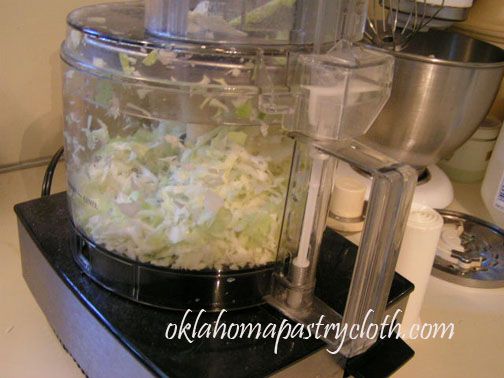 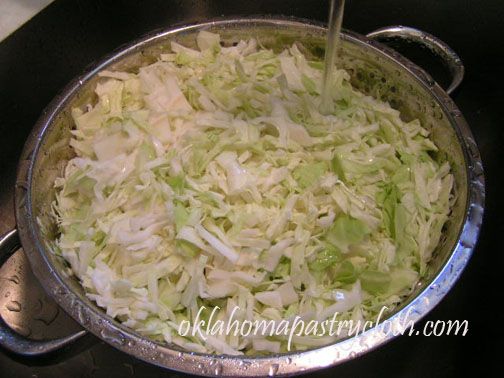 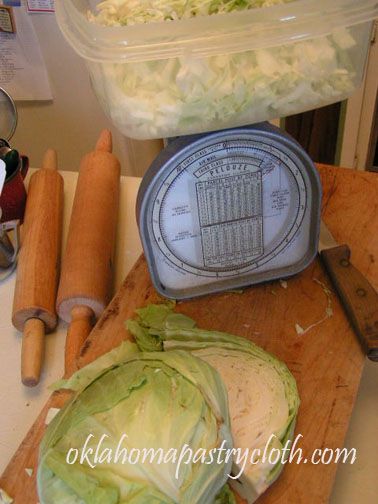 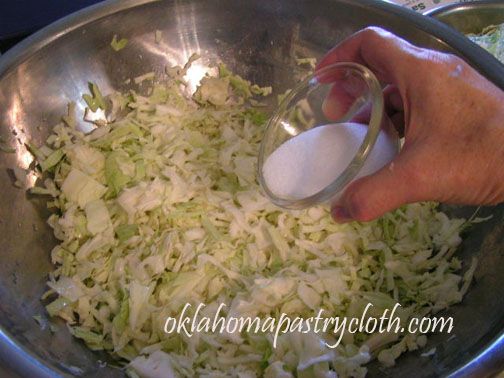 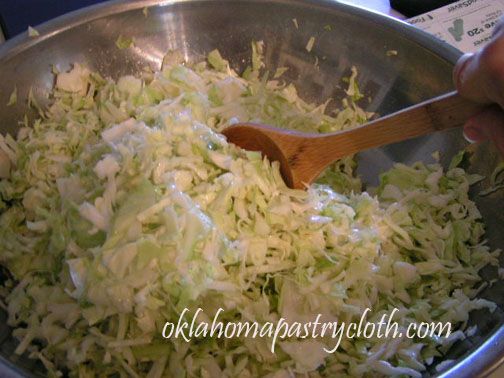 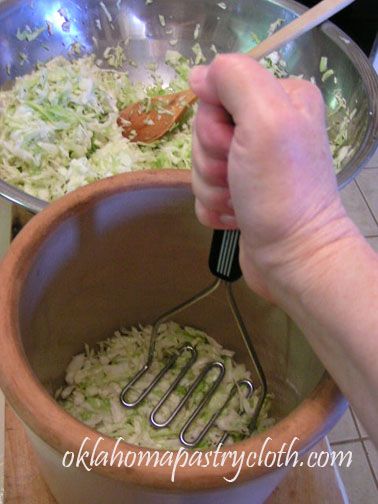  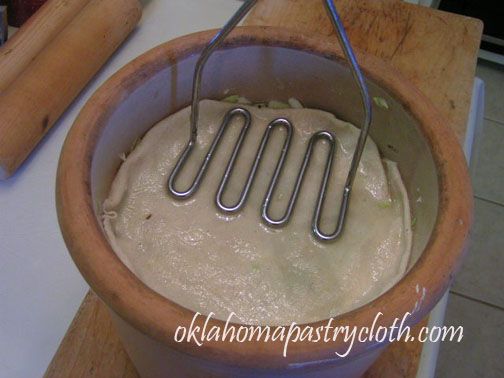 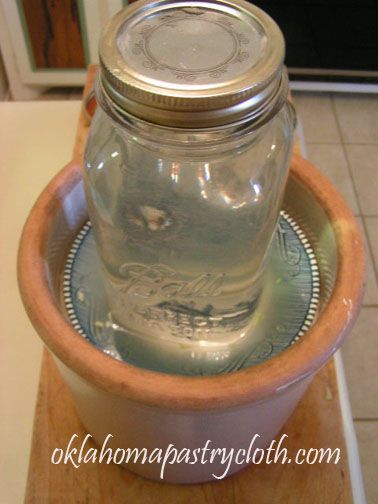 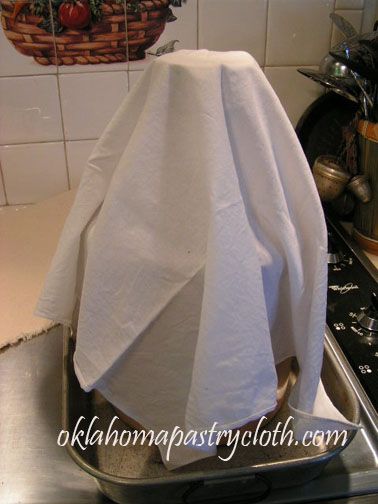 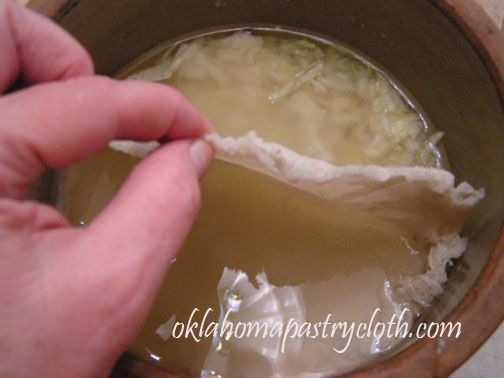 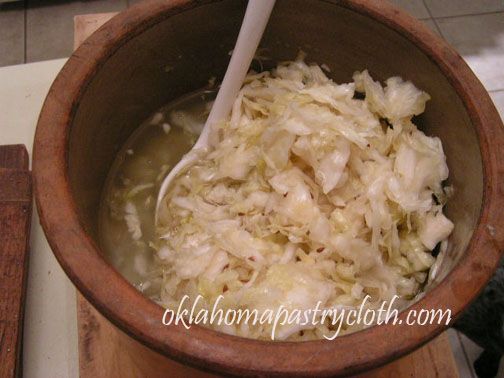 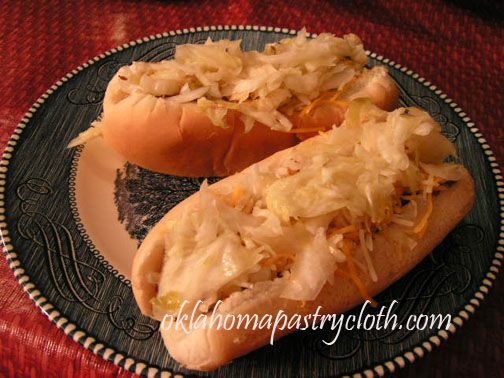 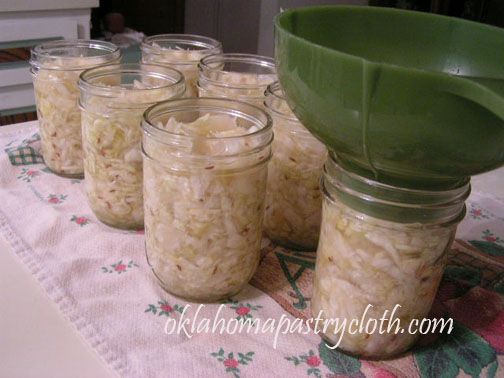 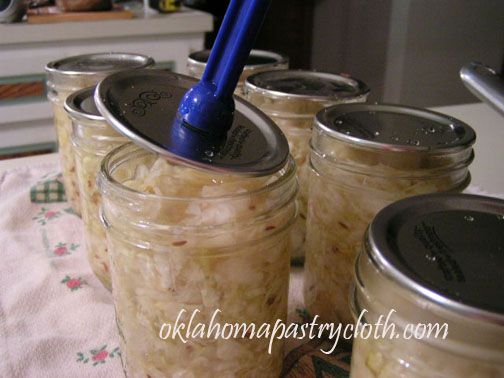 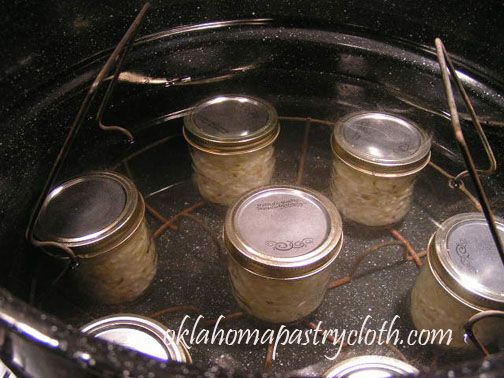  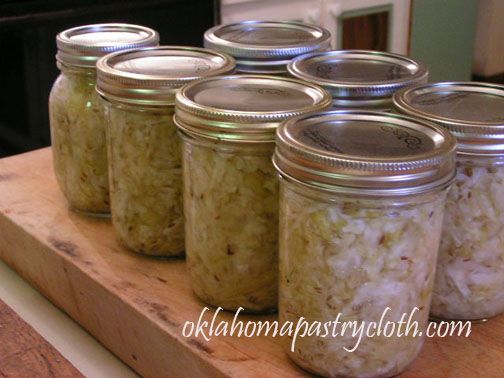 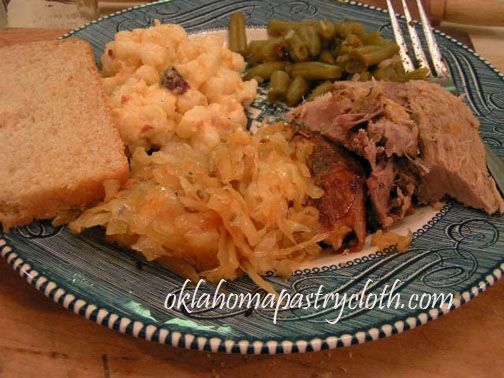
|
|
Oklahoma Pastry Cloth™ Company on Facebook
 |

 Homestead Revival
Homestead Revival Paratus Familia
Paratus Familia Rural Revolution
Rural Revolution